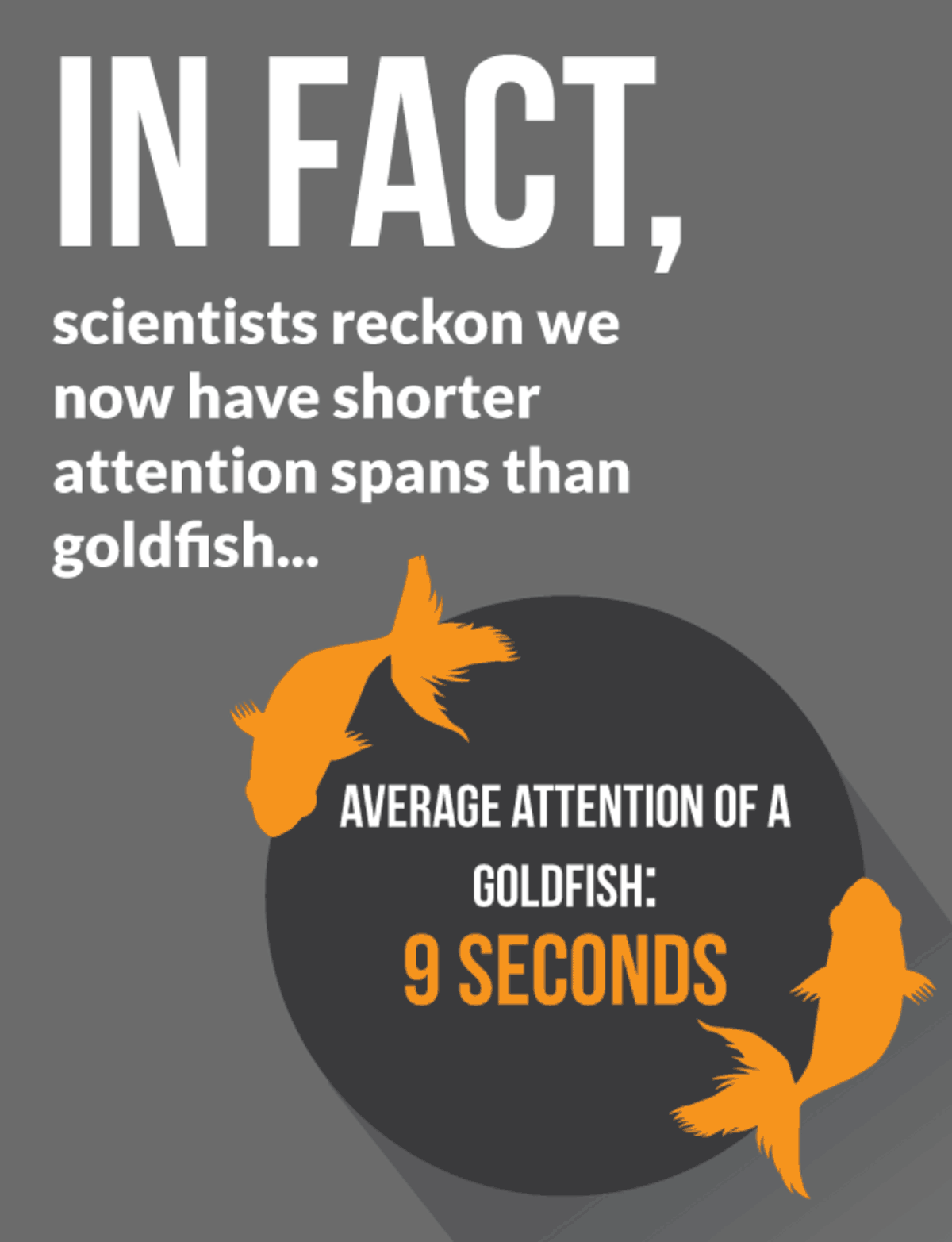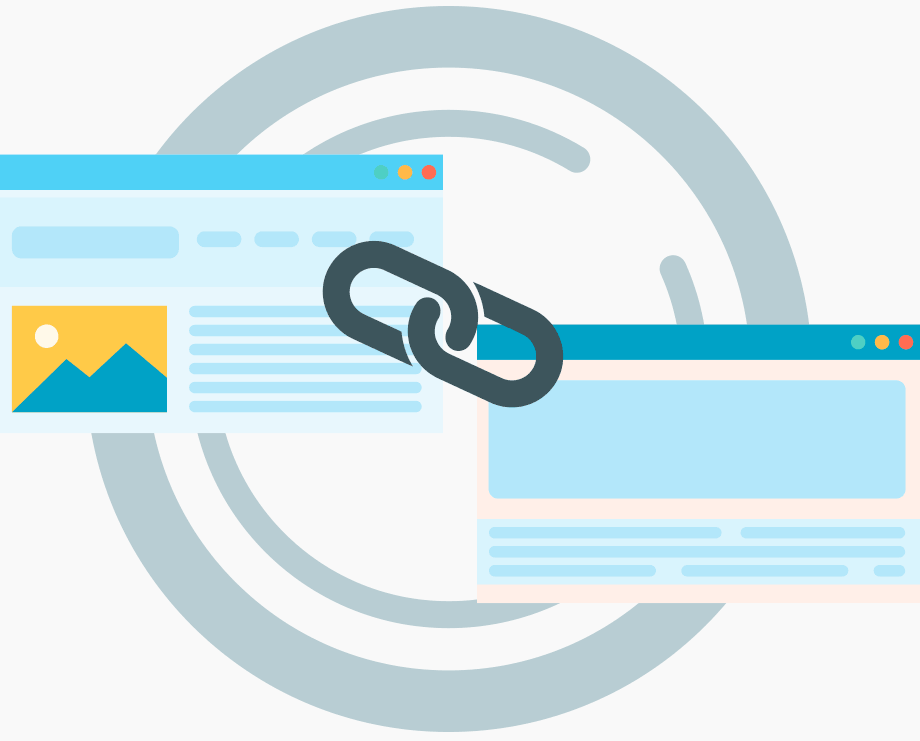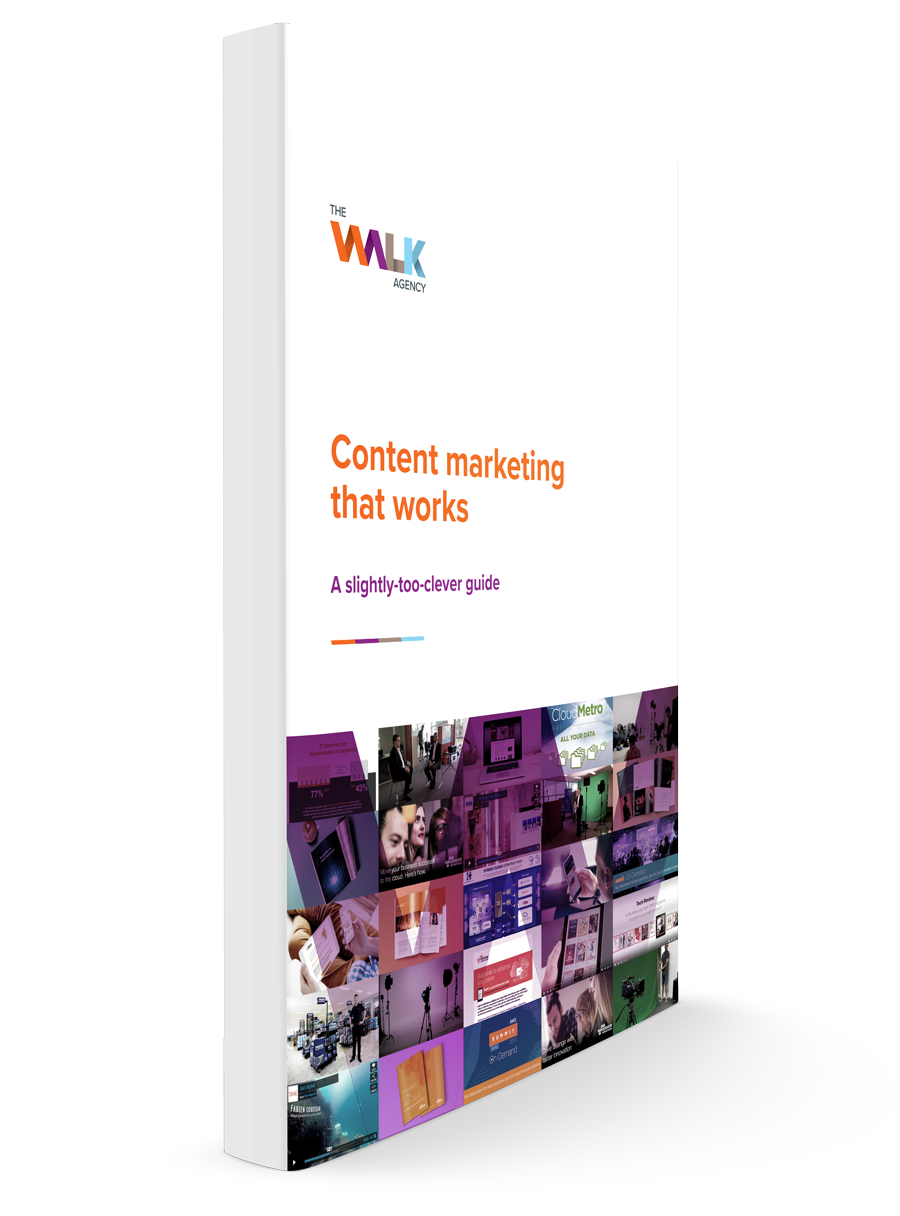In 2020, there were 600 million active blogs globally, and more than 2.5 billion posts in the year.
With all those articles, opinions and perspectives out there, how do you ensure that your business blog cuts through the marketing noise and positions you as a thought leader in your industry?
Like all good stories, let’s start at the beginning.
Why blogging is important for your business

Brands today are living things, and building rapport with customers takes more than just a hail of marketing messages — it takes authenticity and currency. Customers want to know what you actually think, about what’s happening right now. The tech industry, for example, is a busy place where new information is always bubbling to the surface. Sometimes it can feel like innovation is happening so fast it’s hard to keep up. This is where customers might rely on your expert opinion and access to the latest trend information to help them stay up to speed.
By keeping your finger on the pulse and becoming the one that people turn to for the latest on your industry, you can establish yourself as a thought leader. By building your brand up as a trusted source of truth, you’re also building up those vital customer relationships and building that all-important long term brand loyalty.
Need the data? Here are some more reasons why you should be investing in a strong content marketing strategy:
- Build brand recognition: 70% of people would rather learn about a company through articles than adverts
- Increase online visibility: Maintaining a blog can result in a 434% increase in indexed pages, and a 97% increase in indexed links — the more indexed pages and links you have, the more likely you are to be found organically online.
- Save money: Blogging regularly costs approximately 62% less than traditional marketing.
- Maximise your dollar: In 2019, marketers who prioritised blogging were reported to be 13 times more likely to drive a positive ROI than companies who didn’t.
- Attract more leads: Every month, companies who regularly blog are reported to produce an average of 67% more leads than those who don’t. Content marketing also reportedly generates approximately 3 times more leads than traditional marketing.
- Draw organic traffic: On average, businesses that blog regularly receive roughly 55% more website visitors than those who don’t.
Things to consider before writing a blog
Before starting your blog, there are many things you need to consider to ensure that you’re pursuing the right content marketing strategy.
Depending on your industry and target audience, you may need to think outside the box to capture your audience’s attention online. Remember, your goal is to supply your target audience (and search engines) with the relevant and valuable information they’re looking for. That means your content may not even necessarily need to take the form of a traditional blog! Search engines are looking for new and useful content, whatever shape that may take.
“
Remember, your goal is to supply your target audience (and search engines) with the relevant and valuable information they’re looking for.
”
Perhaps, upon reviewing your business and the needs of your customers, you decide that a series of eBooks, videos, infographics or webinars might be more suitable to your audience. Of course, if you’re publishing eBooks and making video, you can always blog about that.
Let’s review things to consider before you decide what form of content you should be producing.
Your target audience
Before starting your blog, it’s important to recognise who you’re blogging for.
Evaluate their interests, their values, and the things they are wanting to know about your industry. The key to writing a successful blog is relevance, and that starts with understanding your audience.
A common error is writing content that’s relevant only from the perspective of your business, rather than the perspective of your customers. For example, if you’re in the IT industry, a blog article about the technical complexity of your new product or service may be exciting to you and your team. But if the buying audience of your product is mainly HR professionals, they may only care about the impact of the product, rather than how it’s built.

One way to help you understand your audience is to consider the most common questions they’re asking you. Your FAQ page can be an excellent source of inspiration for your blog as you build out upon some of your most commonly queried topics in the form of an article.
Conducting thorough keyword research is another way of identifying your audience’s most pressing concerns and questions. By discovering the most commonly searched terms in your industry, and recognising the search intent behind those queries, a strong keyword research strategy can act as inspiration for your next blog article.
Your expertise
The best way to establish yourself as an authority in your industry is to be an authority in your industry. Yes, it comes back to authenticity.
Blogging about things you’re not an expert in also comes with the risk of undermining your position if you get something wrong.
So stick to the topics that you’re qualified to talk about. Then try to take a unique perspective on those topics, and back it up with educated, researched opinions.
While the best blogs share the newest information and insights, remember that if you have an intelligent opinion on something that someone else has written, that still counts. Only a handful of people and businesses can actually break new news, but it’s everyone’s privilege to have thoughts about it.
Brand voice and identity
When writing a blog or any other form of content, it’s vital that you never lose sight of who you are and how your customers see you.
“
By remaining true to your brand’s identity and values, you can offer a consistent experience with your brand that builds trust and confidence.
”
Your blog should come from the same perspective as your other marketing material, from your website and social media copy, down to your emails. Using your brand voice can also be important, if you’re writing on behalf of your brand. By remaining true to your brand’s identity and values, you can offer a consistent experience with your brand that builds trust and confidence. Some blog articles however, are distinctly personal, and if you’re writing as you, don’t be afraid to be authentic. Customers find personalities engaging and love a glimpse behind the curtain, although if your own opinions run in stark contrast to the brand, you should probably ask yourself why!
Your writing capabilities
This one’s going to require a little bit of honesty on your part.
Do you have the time and the writing ability to produce the consistent and high-quality content your brand needs to make your content marketing strategy a success?
If you’re not a natural writer, or if you don’t have the time or expertise to research good content, blogging can seem really hard. Blogs can be a team effort. If you have a great idea, or a really interesting perspective, you can always delegate the research to another staff member and have the actual writing done by a professional writer.
Not forgetting that a crucial aspect of blogging is the importance of SEO, which is a highly specialised skillset.
Your goals
Every business is different, and how you define your success won’t always be the same as other businesses in your industry.
Before you embark on your blogging journey, you may wish to sit down and decide what you aim to achieve with your blog, and what KPIs you’ll be using to track your success. Some of the most commonly tracked blogging KPIs include page visits, traffic sources, average comments and shares per post, and blog-generated leads.
Determining your goals and KPIs now will help to direct your content marketing activities to ensure that you stay on track to achieve your goals.
What makes a successful blog?
Blogging is one of those classic overnight success stories that is really years in the making. Along with authenticity, good content, unique perspectives and skillful writing, the other crucial ingredient to developing a good blog is time. You may need to be patient and keep at it before the impact of blogging becomes clear.
Here are some of the characteristics that go into making your blog one of the success stories.
Search engine optimisation (SEO)
Blogs are clearly less impactful if no one is reading them. Attracting organic traffic online is vital to the success of your blog. A blog is a fantastic opportunity to boost organic traffic and brand visibility online, by being found by users who search for terms related to your brand, products and services.
In fact, with enough success, you can begin to reduce your spend on paid advertising.

It all starts with a strong SEO strategy, and there are many ways of approaching SEO for a blog.
Some bloggers choose to start with their keyword research to help direct their content strategy and the topics they’ll be covering. Others select the topics they believe their audience will find most valuable and interesting, and then conduct keyword research around those topics. Both can deliver authentic topics for your brand, as long as you’re still being genuine with your material on those hot topics and not just pandering to a trend.
There are many fantastic keyword research tools that you can access online, including SEMRush, Ahrefs and Moz. Most of these tools offer a one-month trial, while others deliver limited functionality for non-subscribed users. We suggest you register for a trial with each tool and then pay for a subscription to the one you like best.
Readability
Even with all the facts, figures, and insights in the world, if you can’t communicate effectively with your audience, your blog is going to struggle to earn regular readers.
In general, a blog that’s written for the average person should be written to an 8th grade level, though if you’re a tech company whose audience consists primarily of IT professionals, you’re likely to want to write at a higher level. Similarly, if your audience is less educated, you may want to aim for a lower readability score to ensure that your target audience can connect with your content.
“
Writing as though you were having a real, face-to-face conversation with your readers can help to better engage and connect with them.
”
There are plenty of excellent resources out there that automatically gauge your readability score. Some website builders also come with readability score tools, such as Yoast SEO on WordPress. If you want to get really technical, you can try the ‘Flesch-Kincaid Readability’ test. Assessing characteristics such as sentence length, and the number of syllables per word, this test ‘grades’ your content based on its readability. While software and formulaic tests can help, they also can’t be expected to be 100% accurate, and your ideal grade will depend on your audience and industry.
Beyond formulas and readability tools, it’s also important to remember to keep your content conversational and natural. Writing as though you were having a real, face-to-face conversation with your readers can help to better engage and connect with them.
At the same time, some industries, including science and technology, may require the use of jargon and highly technical language – much of which will automatically kill your readability score. So it’s important to assess your own industry and audience to determine what’s most appropriate.
Length
Many people want to know ‘how long should a blog article be?’
Well…how long is a piece of string?
Studies have found that the average blog post is 1,269 words long. However, studies have also found that it’s actually the articles over 1,500 words that tend to see more traffic. In fact, it seems that the longer the article, the better the results, with the majority of bloggers who write articles over 3,000 words reporting ‘strong results’.
However, you still have to have something to say. Padding out your articles to the detriment of the content won’t yield you better results, and our blog articles should be exactly as long as they need to be. If it takes 1,500 words to get your message across, then write 1,500 words. If it takes less, write less! Ultimately, the quality of your words are more important than how many of them there are.

Just take a look at Seth’s Blog, for instance. This blog flies in the face of just about every piece of common blogging wisdom there is, and yet it’s still one of the most successful marketing blogs on the web.
Frequency
The math is simple. The more you blog, the more content you have out there generating organic traffic.
But not everyone has the time to be blogging every couple of days. And not every audience enjoys being bombarded by daily articles, so you’ll really have to assess your own capabilities and customer preferences to get the balance right.
Some business blogs are updated almost daily, some weekly, and others only a few times a month. It’s typically recommended that your business try to post at least four times a month, with the greatest results coming from businesses who blog at least 16 times a month. But again, every business is different, and these numbers will vary by the industry you’re operating in, and the size of your company.
It should all boil back down to what you have to say. Frequency won’t count for much if you’re not producing engaging, authentic content that’s relevant to your audience.
Getting your structure right
From ‘Top-10’ lists and statistics articles, to long-form paragraphed pieces, there are many ways to structure your blog articles. But no matter what style you go for, pay attention to these common characteristics of successful blogs.
Heading
This is your opportunity to really grab the audience’s attention and tell them why they should be reading your article.
Try to be interesting and compelling, without being misleading. If your headline promises something that you don’t deliver in the article, you may lose the trust of your audience.
For SEO, it’s always best to try to include your primary keyword in the title, as this is one of the first things that search engines take into account when indexing your content.
The body
Our attention spans are a lot shorter than they used to be. In fact, studies have found that the human attention span is roughly 8.25 seconds. To help readers get the most from your content you should optimise your content for scannability.

Organising your content in short paragraphs with frequent subheadings helps your readers cherry pick the information they’re searching for. You should also include pictures to help capture your readers’ interest without them having to read a single word.
By breaking your content into easily digestible sections, you can ensure readers get the information they’re searching for as quickly and conveniently as possible.
Call to action
There’s a lot of debate about whether business blogs should include a call to action (CTA) at the end of their articles.
But it’s a resounding ‘yes!’ from us! If you’re engaging readers on a topic that’s important to your brand, you should be giving them somewhere to go next.
Remember, the purpose of your article is to provide value to your readers, so take care to ensure that your CTA offers value as well.
For example, if you’ve written an article about how customers can get the most out of your newly released software, perhaps your CTA asks them to download a trial of that software, or a guide to using it. You could even encourage readers to contact your team to help them choose the right software plan to suit their needs.
Think of your CTA as an opportunity to offer even greater value to your customers.
Pictures
Even if you’ve broken your content up into bite-sized pieces, great walls of text can still be an intimidating sight.
That’s where pictures come to the rescue.
By breaking up your content and offering a place where your customer’s can rest their eyes, you can help to prevent them from being overwhelmed by a text-heavy article. Pictures are also a great way of entertaining, enlightening, or sparking the interest of your audience, encouraging them to continue reading.
Pictures can also help to explain a more complex idea in an easily digestible format. 65% of people are visual learners, after all!
Research has found that articles that include a picture every 75-100 words typically receive double the number of shares online than articles with fewer pictures. But again, just as when deciding how long your blog article should be, keep it relevant, and the number of pictures will depend on you, your business, your audience, and what kind of content you’re writing.
Links
A strong linking strategy is vital to boosting your online visibility.
There are two types of links: internal and external, and each type serves a different purpose within your content.

Internal links allow search engines, such as Google, to understand the hierarchy of your content. This helps the search engine rank your content and determine what it should be prioritising. Internals links are also useful for helping to guide readers through your website to discover other relevant content.
External links, on the other hand, help to improve the credibility of your website while showing that you are genuinely trying to offer valuable resources. Backing your content with statistics from reputable sources is a great way of building authority. This can help develop a relationship of trust between your audience and your brand while proving that you take the time to ensure that your articles are factual and reliable.
Take care to only link to authoritative websites, or your linking strategy can backfire and may even negatively impact your ranking. For similar reasons, if a low authority or scam website links to your content, you may need to try to have the link removed, or you risk the link reflecting poorly upon your own site’s authority.
Writing high quality content is a great way of encouraging other high ranking sites to link to your page. This will improve the authority score of your site, which can potentially raise your visibility in the SERPs (Search Engine Results Pages).
Looking for an expert eye to review your content strategy?
Here at The Walk, we’ve spent years creating and perfecting compelling content marketing strategies. If you have a content strategy that you think could do with a bit of a polish, we’re here to help.
Simply contact us today and we’ll be happy to review your strategy and offer suggestions for improvement.
Want to learn more about developing a content strategy that gets results?
Download your free copy of our Content Marketing Guide to learn more about how you can develop an effective content marketing strategy that delivers unmatched ROI and drives your business for success.





